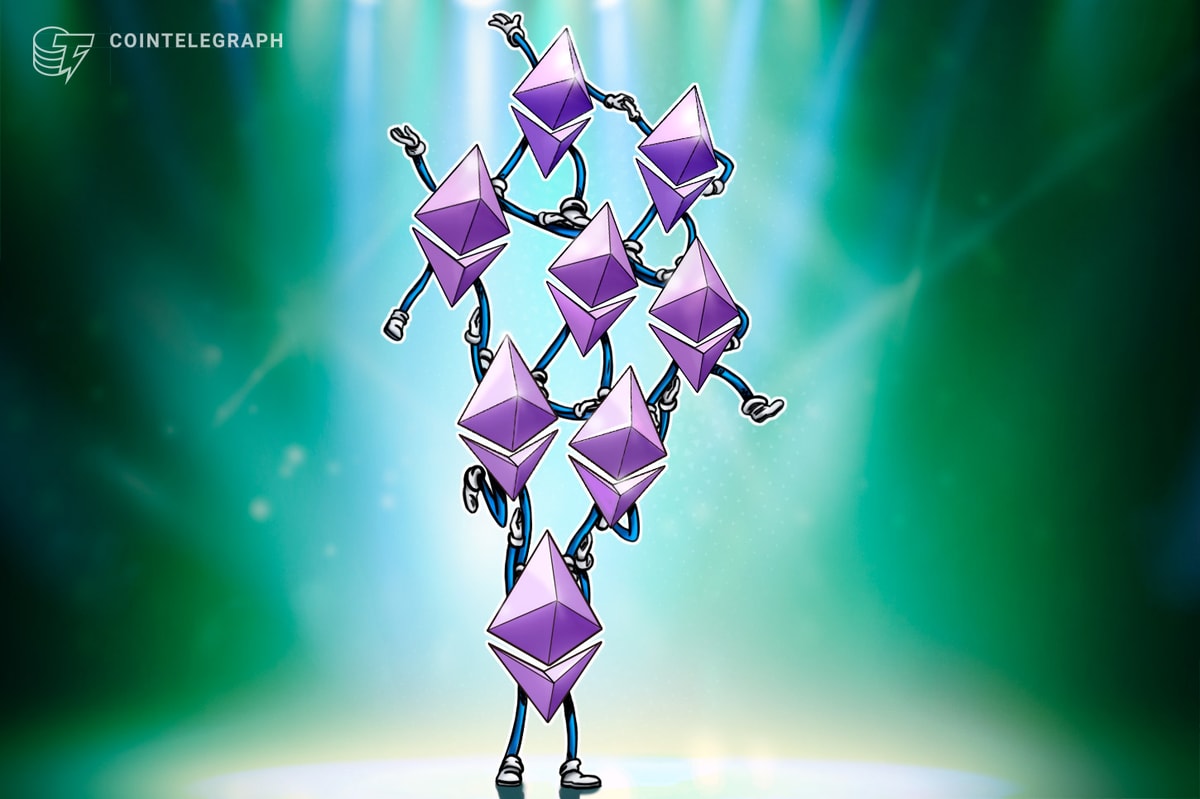The Ethereum network has long been criticized for its high transaction fees, which often exceed $4. However, the exponential growth of layer 2 blockchains has created a sustainable solution for decentralized applications (DApps) that require higher scalability. The ecosystem has seen a 70% increase in trading volume over the past 30 days, but can this match Solana’s success?
Decentralized exchange 30-day trading volume, market share. Source: DefiLlama
Solana may have surpassed Ethereum’s base layer activity, but it still falls short when considering Ethereum’s layer 2 blockchain. According to DefiLlama data, Solana accounted for 35.4% of decentralized exchange (DEX) trading volume in November. This is an increase from 27.2% in October. In comparison, Ethereum and the Layer 2 ecosystem had a market share of 45.2% in November, down from 50.1% in October.
In terms of deposits, Ethereum’s base tier has a clear advantage with $69.7 billion in total value locked (TVL) compared to Solana’s $9.2 billion. In particular, some of Ethereum’s layer 2 solutions, such as Base and Arbitrum, are already worth $3 billion each in TVL. According to DefiLlama data, the total TVL of the Ethereum layer-2 ecosystem has reached $11.4 billion.
Blockchains ranked by total value locked (USD). Source: TradingView
There is no doubt that Solana has emerged as a major player, securing the second spot by deposits. However, Ethereum’s dominance remains unchanged. Additionally, the impressive growth of Base, an Ethereum layer 2 solution founded and managed by the Coinbase exchange, offers particularly promising prospects for the memecoin sector.
Memecoin has been a major catalyst for Solana’s adoption and growth, with several tokens reaching market capitalizations exceeding $1 billion. Pump.fun has made significant changes to the creation of liquidity pools for new token launches, resulting in a significant increase in trading activity on platforms such as Raydium and Orca, which have amassed a total trading volume of $24.6 billion over the past seven days.
Solana surpasses Ethereum in terms of fees.
Some analysts argue that volume and total value at lock (TVL) are merely a means to an end. They emphasize that securing fees is critical to the survival of the network as stakers must be rewarded for their verification services, creating incentives for long-term holding. The main value driver of cryptocurrencies on smart contract blockchains is payment for processing services, which supports decentralization.
Blockchain and DApp 30-day fees, USD. Source: DefiLlama
Solana recently surpassed Ethereum to become the highest-grossing blockchain in terms of fees, and investors are wondering whether (ETH) is overvalued with a market capitalization of $436 billion, while (SOL) is valued at $116 billion, a 73% discount. I raised a question. However, this simple analysis overlooks Solana’s high inflation rate, currently at 5.3%.
Looking ahead to 2025, Ethereum is considering additional fee restructuring, including dynamic fee changes based on network usage and potential optimizations to how layer 2 solutions interact with the base layer, such as rollups. These measures aim to improve the efficiency of decentralized applications (DApps), reduce transaction costs, and ultimately increase network fees.
relevant: Will Solana recover from its price plunge and reach $300 SOL?
Currently, Ethereum’s layer 2 solutions are struggling to compete with Solana, which offers a more seamless experience for new entrants and token launches. However, Base is gradually gaining traction as the Coinbase exchange continues to have an impact on newcomers to the field.
For now, Solana’s growth appears unhindered, paving the way for higher Total Value Fixed (TVL) and trading volume, which will ultimately have a positive impact on SOL’s price momentum.
This article is written for general information purposes and should not be considered legal or investment advice. The views, thoughts and opinions expressed herein are those of the author alone and do not necessarily reflect or represent the views and opinions of Cointelegraph.

